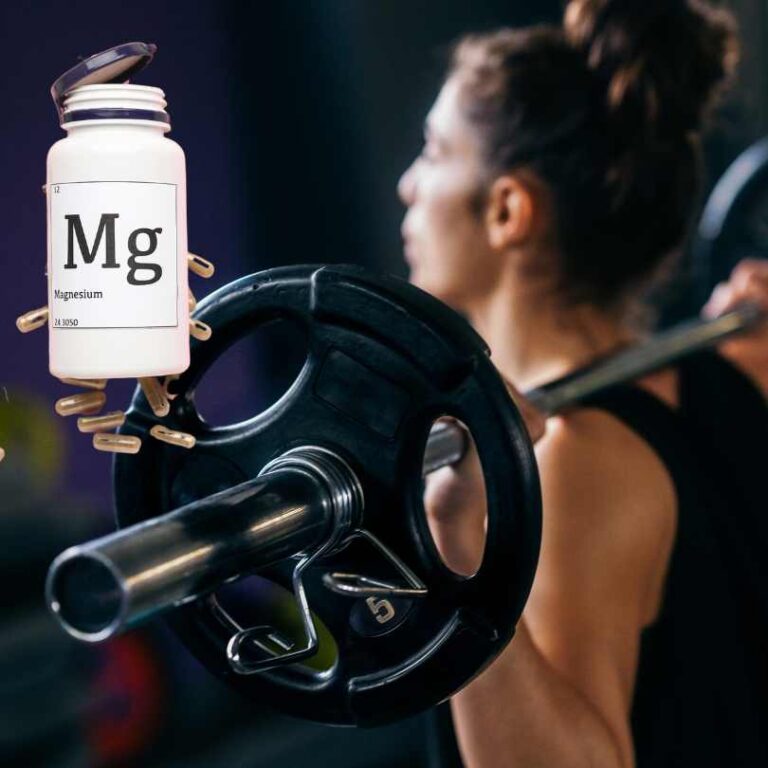Mobility Training Benefits: Can it really help you age better?
You might already understand that there are many mobility training benefits at any age or you might be quite new to the concept. But what does this really mean for us over 40 folks? Is it even more important than ever? The answer is; absolutely!
The back, neck, and hip pain; Why do you always get twinges and pull muscles?
Have you recently started noticing that you get a little twinge here and there from doing pretty much nothing? Lower back, neck, hip, pulled hamstring? It’s quite frustrating when you still have to go to work, clean the house, and probably do parenting. You just don’t have the time for this BS.
Or have you noticed that your knees and hips are feeling a little tighter than they used to when you squat or bend down to pick something up? Do you just say to yourself “oh well I’m getting old now”. Maybe you say it as a joke sort of, but not really, because deep down you are probably trying to come to terms that this is part of the normal aging process, right? Wrong!
While taking some glucosamine supplements for joint support can be helpful in lubricating your joints and relieving some discomfort it’s not enough to maximize the potential of what your body can do.
Can you reverse the aging process and unstiffen yourself?
As a personal trainer coaching clients for over 12 years in strength, fitness, and mobility I am here to tell you that it doesn’t have to be this way.
The good news is you can reverse the stiffness and regain your full range of motion. I have coached many of my clients through this and they came out more mobile and flexible than they were ever before, even in their 50s and 60s.
You need to put a little consistent work into it. The longer you leave it the harder you will have to work. So if you are only in your 30s or 40s now, start learning about mobility exercises and make it a part of your life.
Reality check – are you old or just neglected yourself a bit?
Age has nothing to do with stiffness, it is the lack of use of your joints to their full potential over time, and a sedentary lifestyle does, unfortunately. Our body adapts to the shape of our office chair or leaning over our devices. Even if you don’t have a sit-down job you most likely only move in the same patterns that your body is used to, which is limited in range of motion.
Let me tell you there are plenty of very mobile and flexible mature individuals out there, they are not lucky, they just work on it consistently and progressively. They also educate themselves about what is possible and how they can tap into the best resources to build a stronger, more resilient, and healthier body.
Having a job on your feet won’t mean you will be mobile, flexible, and fit. It definitely beats a desk job for overall health, but it’s not enough to bring out the full potential of what your body can do.
Your body is capable of so much more than you think at any age. You just need to unlock your ability and train your body to be the best it can be. So don’t cut yourself short by saying “It’s just old age”, start challenging yourself in ways that will make you better tomorrow than you were yesterday.
Why did I start prioritising mobility training as a coach?
How did mobility training affect me after 40?
Being a gym rat for the past 25 years, I have to admit I gave very little thought to mobility training in the past, focusing on strength, and aesthetics. Until I started noticing that although I was strong and fit my joints started to get tighter. I noticed muscular and joint twinges here and there from everyday activities. Like pulling my neck muscle from just putting my sweater on. Ridiculous right?
My squats were difficult not because the weight was heavy, but because I struggled to get low enough to make the reps count. This was my wake-up call and motivation to dive deep into mobility training. I really had to find out for myself about the mobility training benefits, how it can change the way I move daily, and how it can impact my workouts.
How did mobility training affect my clients?
I work with many clients who are over 40, and 90% of them used to complain about knee, lower back, hip, or shoulder pains or they often injured themselves doing day-to-day activities. This drove me to do a lot of research and learn about mobility training benefits and how to implement them in simple workout routines daily.
After undertaking multiple courses, working closely with a physical therapist, and testing all the exercises on myself over a long period of time, I then implemented them on my real-life clients. I started noticing a huge shift in how my clients moved and how much faster they started to progress in everything.
It made me realize that not only does mobility training benefits our range of motion, but it benefits all aspects of our daily life. How we get up, how we get down, and how we are able to move bulky or awkward objects such as items out of the car or when cleaning the house. And most importantly I noticed it had a huge impact on their confidence. Especially for those 50+, it helped them realize their body is still so very capable and badass.
Are joint mobility and muscle flexibility the same thing?
Now mobility training isn’t the same as static stretching, you know the type of stuff you do at the end of most fitness classes.
Although they are not completely separate, and in most cases, you can work on your muscle flexibility through joint mobility exercises. There are some differences in how you would execute a typical hamstring stretch vs. an exercise that will not only challenge the elasticity of your hamstring muscle but also the joint it’s attached to.
Simply put – flexibility mainly refers to the ability of a muscle to stretch lengthwise whilst joint mobility has to do with how far you can open and rotate your joints.

People often refer to these interchangeably and it’s not entirely incorrect, often when you perform joint mobility exercises your muscles also have to stretch out to allow you to tap into a good range of motion. So you can work on both at the same time.
How can you incorporate mobility and flexibility exercises into your existing routine to make it simple?
While doing traditional stretches might feel good, help you alleviate tight muscles, and help you be less sore it doesn’t mean you are improving your range of motion in your joints like your hip flexors or shoulder joint.
This requires different types of stretching and exercises. However, muscle stretching and joint mobility exercises can often work hand in hand. You need to do very specific types of exercises to help improve the range of motion of your joints, and no they don’t have to be complicated, but they have to push your joint’s comfort zone a little further each time.

Some of the most common types of mobility exercises for beginners that you can incorporate into your daily routine are CARs (Controlled Articular Rotations). If you are not familiar with this term it basically means rotating your body parts in a slow and controlled manner at shoulder joint, elbow joint, hip joint, thoracic spine and even knees and ankles.
Now, I know many of us are time-poor so as I said you don’t have to add a whole new routine to your workouts. Instead include some simple mobility exercises as part of your warm-up. You can just start your normal exercise routine with a 10-minute mobility and some dynamic stretching warm-up. This a great way to prepare your entire body to move and perform better through your workout routine. If you are like me and like to split your training into upper body and lower body days then you can just focus your mobility drills on that area if you are short on time.
My time-saving mobility hack:
When I train my upper body at home or the gym, I will normally spend about 10 minutes preparing my spine, shoulder joints, and elbow joints only for the workout and not worry about my lower body joints just yet.
But once I commence the workout I throw in a few lower-body mobility rotations and deep squats in between my upper-body strength sets while I am resting anyway. So rather than scrolling through my phone between sets of exercises I move around, do hip circles, hip flexor stretch, and throw in a deep squat hold. This is the best way to make good use of your rest time.
You will never see me sit on a machine doing nothing between sets. I’m always moving. I am at the gym to make the most of every minute I’m there. Often those stretches and movement patterns make me feel great and I enjoy doing them as they relax my muscles and make me feel very bendy and flexible. It also prevents me from cooling down too much between my sets.
So what mobility training benefits are there for people beyond 40?
1. Enhanced Joint Health: Improves joint range of motion, reducing the risk of stiffness and discomfort which can definitely start becoming noticeable as we get older, unless we get on top of it.
2. Increased Flexibility: Promotes greater flexibility, making daily activities easier.
3. Improved Posture: Helps correct posture issues, reducing strain on the spine and muscles.
4. Enhanced Balance and Coordination: When you perform mobility exercises you also often improve your balance as many of the exercises require you to subconsciously activate your core or stand on one leg.
5. Injury Prevention: Increases the body’s ability to move efficiently, decreasing the likelihood of strains or sprains. Lack of mobility can cause you to overcompensate and move poorly, thus injuring yourself more frequently.
6. Pain Reduction: Helps alleviate chronic joint pain and discomfort, especially in areas like the back and hips.
7. Better Performance in Physical Activities: Enhances performance in sports, exercise, and recreational activities. It can also move you forward in your resistance training as you will be able to access a deeper range of motion and squat deeper creating better stimulus for the muscles to grow.
8. Stress Reduction: Better mobility encourages relaxation and reduces tension in muscles and joints.
9. Improved Quality of Life: Makes daily tasks easier and more enjoyable. Poor mobility leads to poor quality of life.
10. Slows Age-Related Decline in Mobility: Helps maintain or even improve mobility for older adults.
11. Supports Independence: This enables us to maintain our independence by being able to perform daily activities without assistance.
12. Enhanced Mind-Body Connection: Mobility exercises often involve mindfulness and body awareness, which can lead to a deeper connection between the mind and body.
13. Better Sleep: Reduced muscle tension and improved relaxation can contribute to better sleep quality and better overall health.
14. Increased Circulation: Good mobility enhances blood flow, aiding in the delivery of nutrients and oxygen to muscles and tissues.
15. Aids in Rehabilitation: Mobility exercises can be an important component of recovery after injury or surgery.

How to do mobility exercises correctly.
The short answer is – mindfully.
I’ll explain.
When you perform outward hip rotations for example, which is one of the most popular hip mobility exercises, you shouldn’t just rotate your hip in circles just for the sake of getting the reps over with. You need to make sure that the other hip stays still and not moving, and that you push your leg outwards a little past that comfort zone trying to challenge the current range of movement that you already have. Slightly force it to open up a bit more, but of course not to the point that it hurts and becomes very uncomfortable. Just a little more than what you are used to until you feel that good stretch.
It’s important to perform each repetition very slowly and not rush through it. You would apply the same principle to your shoulder mobility exercises and do it with control, focusing on putting that arm back a little more each time and stretching the front of your shoulder.
Conclusion.
As kids, we are usually great at both mobility and flexibilitye, but over time we allow our joints and muscles to stiffen up due to lack of use and a sedentary lifestyle or only performing daily repetitive movements within our comfortable range of motion.
So where I am going with this is, don’t ever stop moving and playing like a kid and you will stay young and mobile well into your mature years and even beyond 70.
Don’t be afraid to try and sit into that deep squat even if it means you have to hold on to a pole or some kind of sturdy object in front of you. Or you can gradually work towards that, yes even if you had injuries and surgery before.
Rehab physios will often try to help you work on your mobility and perform exercises that are not comfortable and challenging to help you regain your best range of motion because they know how important it is for the quality of your future life.
In other words, use it or lose it.





